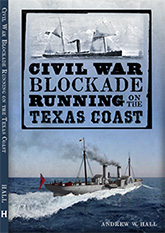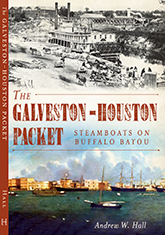A Marker for Lieutenant Colonel Carter

Back in 2010 I started this post about Lt. Colonel Benjamin Franklin Carter of the Forth Texas Infantry, but never finished it. Carter started out as commanding officer of Company B. He was promoted to Major in late June 1862, and advanced to Lieutenant Colonel two weeks later, on July 10, 1862, and commanded the regiment at Sharpsburg. Carter was grievously wounded during the Texas Brigade’s assault on Little Round Top at Gettysburg on July 2, 1863, struck by shell fragments in the face and legs. He lingered for almost three weeks, dying on July 21. My post was occasioned by a June 2010 news story, describing the placement of a marker at his gravesite.

In an interesting two-part story from the North Texas Herald Democrat, an officer of the 4th Texas Infantry killed at Little Round Top gets a grave marker in Pennsylvania:

[Lieutenant Colonel] Carter asked the doctor if there might be some gentleman in town to whom he could appeal for a Christian burial. When the doctor told McClure the story, McClure went to the hospital to visit Carter. Within days Carter died and McClure asked that he be buried in the Presbyterian burial grounds. The request was unanimously denied by the church members. Every other church in town also refused to allow Carter to be buried in their cemeteries. Finally, with help from a member of the Methodist Church, a burial plot was allowed in the Methodist Cemetery and Carter received a Christian burial there. For 33 years Carter lay in that grave with a granite headstone until the cemetery was sold, along with the Methodist Church, to the Brethren congregation. When the church decided to enlarge its facilities, the only way it could build was into the burial grounds. Forty-seven graves of people who had no one to claim their bones, including Carter’s, were disinterred and taken to the Cedar Grove Cemetery and buried in a single grave with no head stone. It was said that Carter’s stone probably was used as ballast when the concrete was poured for the new section of the church.
![]()
Benjamin F. Carter was born in Tennessee in 1831. At the time of the 1850 census, eighteen-year-old Carter was teaching school in Giles County, Tennessee. After completing Jackson College, he relocated to Austin, where he worked as an attorney. He served a term two consecutive one-year terms as Austin’s mayor in 1858 and 1859. In the 1860 census, he is listed as 29 years old, with a wife Louisa and two daughters, ages 1 and 3. He reported owning $2,000 worth of real estate, but did not report any personal property. He is not listed that year as a slaveholder.
With the coming of the war he organized a company called the Tom Green Rifles, that ultimately became Company B of the 4th Texas Infantry. Van C. Giles, a member of Carter’s company, noted years later that the entire regiment was teeming with members of the bar:
![]()
Of the ten original captains who went to war in Virginia with the Fourth Texas regiment in 1861, six of them were lawyers, two merchants, one a farmer and one a stockman. Of the thirty lieutenants, nearly one-third were lawyers. Of the fifty sergeants, fifteen were lawyers, and of the 1500 men who served in that old regiment from the beginning to the finish, there was no end to lawyers and law students. Of course there were not enough offices in the regiment for all of them. Lawyers in war are like lawyers in peace, they go for all that’s in sight. They held the best places in the army and they hold the best places in civil life. It’s a mighty cold day when a lawyer gets left if chicken pie is on the bill of fare.
![]()
Even among the lawyer-soldiers of the 4th Texas, though, Carter stood out:
![]()
Captain B. F. Carter of Company B was far above the average of men as you meet them. Intellectually, he had no superior in the regiments. A fine lawyer, a natural born soldier, he was a strict disciplinarian, but practical and just in all things. He possessed the gift of knowing how to explain every maneuver set down in Hardee’s Tactics so thoroughly that the biggest blockhead in the ranks could understand them Physically he was not strong and the long marches used to weary him very much. On those occasions, to help him along, the boys would divide up his luggage, one taking his sword and belt, another his haversack and canteen another his blanket, and so forth. By this means we managed to keep him up. . . . There was not an officer in Hood’s Texas Brigade in the Army of Northern Virginia who was more universally loved and admired by the soldiers of that old command than Lieutenant Colonel Ben F. Carter of the Fourth Texas Regiment, whom I have mentioned earlier. He was the very soul of honor, full of the milk of human kindness, yet at times he appeared harsh and cruel, especially to those who did not know and understand him. . . . After our arrival at Richmond [Virginia] in the summer of 1861, many of the men were sick from exposure and change in climate. They were sent to various hospitals in the city. Captain Carter would send someone every day to see how his boys were getting along, but would never go in person to see them. He would buy and send them little delicacies, and to some of the prodigal fellows who never had a cent he often sent money.He manifested the greatest interest in his men and nothing the quartermaster could issue was too good for old Company B — but he strictly avoided coming in contact with the sick and wounded. He often spoke of this peculiarity, or apparent indifference, explaining it by saying that he could not bear to see any one suffer, and that he had a perfect horror of a sick room.
![]()
Giles was writing long after the war, of course, so his profile of Carter undoubtedly includes a certain nostalgia, along with the knowledge that Carter did not survive the war. Nonetheless, it offers a vivid portrait of the man, and evinces affection and respect.
Part 2 of the news story is here.
_________
Carter portrait via user AUG351 at Civil War Talk.





A fine profile of Colonel Carter. As an attorney I enjoyed some of the observations 🙂
Well done, Andy.
I’m trying to track down the second part of the Giles’ quote on Carter. It’s not in my copy of Rags and Hope.
I’ll look for it.
The quote beginning, “Captain B. F. Carter of Company B was far above the average. . . .” starts on p. 49 (first graf), then skips to the last graf on p. 50 of my edition (end of Ch. II).
Thanks. I found it. For Some reason when read it, it thought that was talking about Captain Ryan, who is right above that.
On Wed, Jun 8, 2016 at 6:39 PM, Dead Confederates, A Civil War Era Blog wrote:
> Andy Hall commented: “The quote beginning, “Captain B. F. Carter of > Company B was far above the average. . . .” starts on p. 49 (first graf), > then skips to the ladt graf on p. 50 of my edition (end of Ch. II).” >
Giles rambles a little bit, and is hard to follow in places.
Was cleaning vets tombstones today and found Carters stone. Googled him and came across this article. Very poignant. I love history and his story is one I’ll never forget.